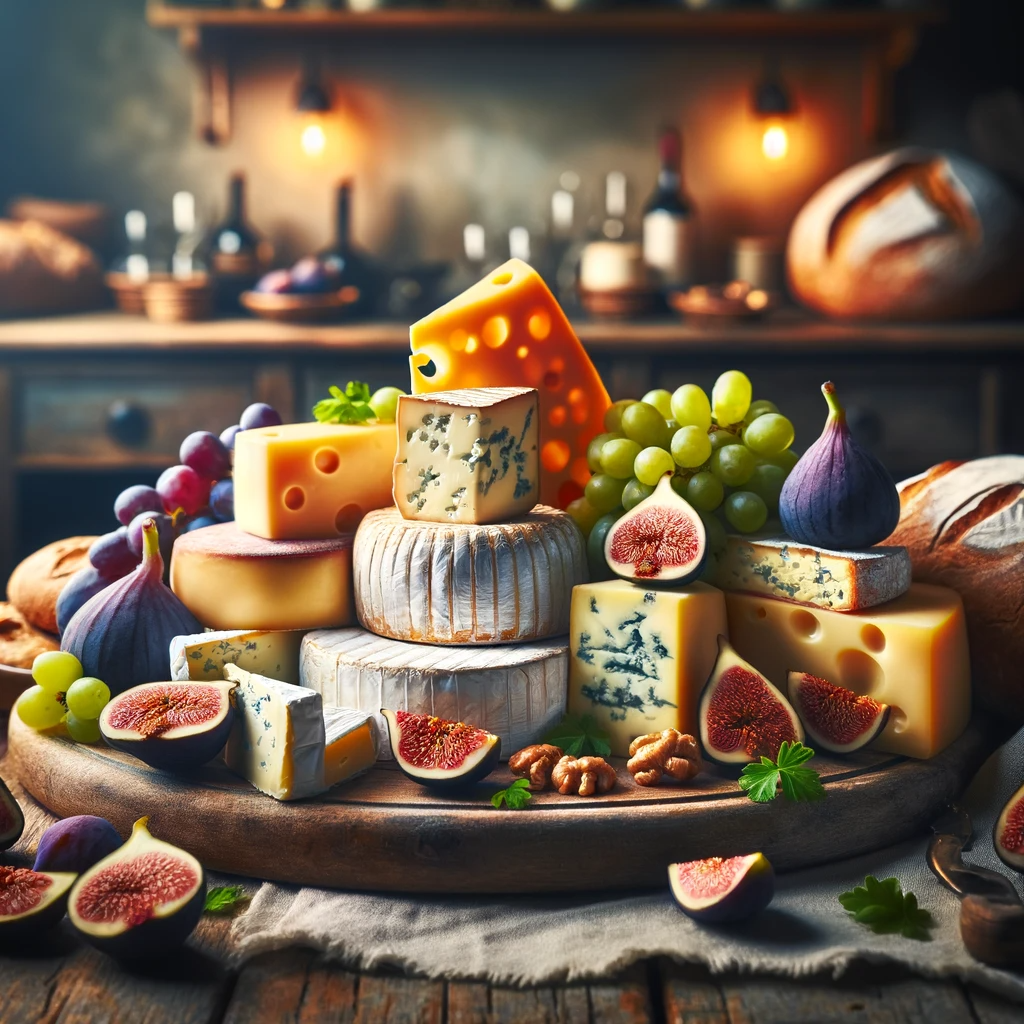Introduction
Cheese is a beloved food item that comes in a multitude of varieties, each with its own unique flavor profile. Have you ever wondered what makes cheese taste the way it does? The answer lies in the science behind its ingredients and the intricate processes involved in cheese production. In this article, we will delve deep into the world of cheese, exploring the key ingredients responsible for its flavor and texture, and how they interact to create the delicious concoctions we know and love.
Main Ingredients of Cheese
At its core, cheese is made from just a few fundamental ingredients: milk, rennet, salt, and bacteria. These elements interact in complex ways to shape the final flavor and texture of the cheese.
Milk: The Foundation of Flavor
Milk is the primary ingredient in cheese production and contributes significantly to its flavor. The type of milk used, whether it’s cow’s milk, goat’s milk, sheep’s milk, or even buffalo milk, plays a crucial role in determining the cheese’s taste. Each type of milk has a unique composition of fats, proteins, and sugars, which influences the final flavor.
Rennet: Coagulating Agent
Rennet is an enzyme that acts as a coagulant, causing the milk to curdle and form solid curds. This step is critical in cheese production as it separates the liquid whey from the curds. The choice of rennet and its amount can influence the texture and flavor of the cheese. Traditional animal rennet and microbial rennet are two common options used by cheese makers.
Salt: Flavor Enhancer and Preservative
Salt serves multiple purposes in cheese-making. It not only enhances the flavor of the cheese but also acts as a preservative, helping to extend the cheese’s shelf life. The amount and type of salt used can have a significant impact on the cheese’s taste, with variations ranging from mildly salty to intensely savory.
Bacteria: The Magic of Fermentation
Bacteria, both natural and added cultures, play a crucial role in the fermentation process of cheese. These microorganisms convert lactose (milk sugar) into lactic acid, which contributes to the cheese’s flavor profile. Different strains of bacteria can impart various flavors and textures, making them a key factor in cheese diversity.
Secondary Ingredients and Their Impact
In addition to the main ingredients, there are secondary ingredients and techniques that further shape cheese flavor:
Age: Maturation Matters
The aging process of cheese is a vital factor in flavor development. The longer cheese is aged, the more complex its flavors become. Factors such as temperature, humidity, and the type of environment in which cheese is aged all influence its final taste.
Additives and Flavorings
Some cheeses incorporate additional ingredients such as herbs, spices, or even truffles to enhance their flavor. These additives can create unique and exciting taste experiences.
Texture and Structure
The texture of cheese, whether it’s creamy, crumbly, or firm, is determined by the ingredients and production methods used. The distribution of fat, protein, and moisture in the cheese affects its mouthfeel and overall sensory experience.
The Science of Cheese Flavor Development
The science behind cheese flavor involves a complex interplay of chemical reactions, microbial activity, and enzymatic processes. Here’s a brief overview of how these elements come together:
- Microbial Action: Bacteria and molds break down milk components, creating aromatic compounds that contribute to cheese flavor.
- Enzymatic Reactions: Enzymes released during cheese production transform proteins and fats, generating a wide range of flavor molecules.
- Aging: As cheese ages, proteins and fats continue to break down, leading to the development of new flavors and textures.
- Terroir: Just as wine reflects the characteristics of its grape-growing region, cheese can capture the essence of its place of origin, known as terroir. Factors like soil, climate, and local flora influence the flavor of cheese.
Conclusion
In conclusion, the science of cheese is a captivating journey through the interaction of basic ingredients, microorganisms, and time. Understanding the role of milk, rennet, salt, bacteria, and other secondary factors is essential in grasping how cheese develops its diverse flavors and textures. The next time you savor a piece of cheese, take a moment to appreciate the intricate science behind its creation, and enjoy the rich tapestry of flavors it has to offer.
